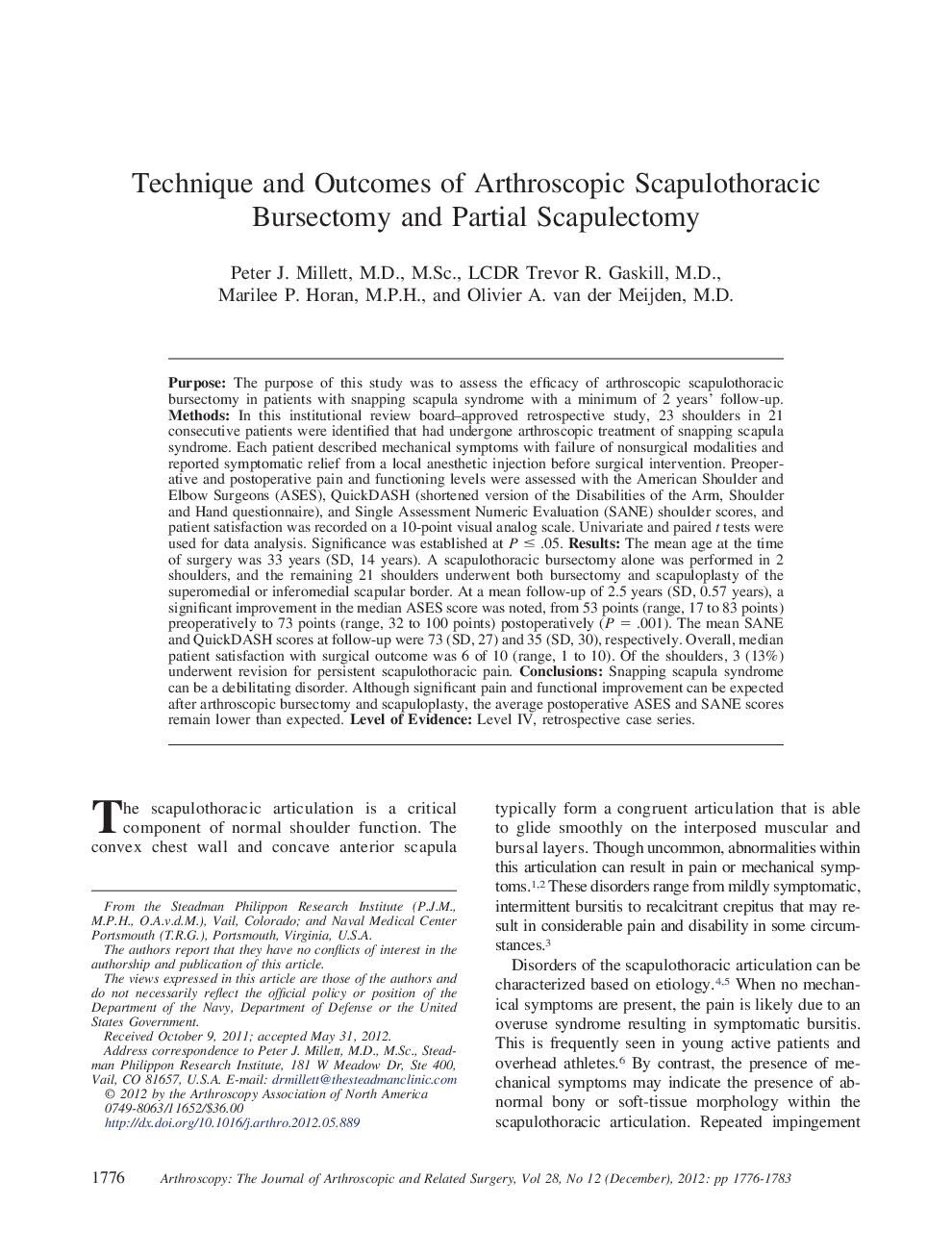| Article ID | Journal | Published Year | Pages | File Type |
|---|---|---|---|---|
| 4044031 | Arthroscopy: The Journal of Arthroscopic & Related Surgery | 2012 | 8 Pages |
PurposeThe purpose of this study was to assess the efficacy of arthroscopic scapulothoracic bursectomy in patients with snapping scapula syndrome with a minimum of 2 years' follow-up.MethodsIn this institutional review board–approved retrospective study, 23 shoulders in 21 consecutive patients were identified that had undergone arthroscopic treatment of snapping scapula syndrome. Each patient described mechanical symptoms with failure of nonsurgical modalities and reported symptomatic relief from a local anesthetic injection before surgical intervention. Preoperative and postoperative pain and functioning levels were assessed with the American Shoulder and Elbow Surgeons (ASES), QuickDASH (shortened version of the Disabilities of the Arm, Shoulder and Hand questionnaire), and Single Assessment Numeric Evaluation (SANE) shoulder scores, and patient satisfaction was recorded on a 10-point visual analog scale. Univariate and paired t tests were used for data analysis. Significance was established at P ≤ .05.ResultsThe mean age at the time of surgery was 33 years (SD, 14 years). A scapulothoracic bursectomy alone was performed in 2 shoulders, and the remaining 21 shoulders underwent both bursectomy and scapuloplasty of the superomedial or inferomedial scapular border. At a mean follow-up of 2.5 years (SD, 0.57 years), a significant improvement in the median ASES score was noted, from 53 points (range, 17 to 83 points) preoperatively to 73 points (range, 32 to 100 points) postoperatively (P = .001). The mean SANE and QuickDASH scores at follow-up were 73 (SD, 27) and 35 (SD, 30), respectively. Overall, median patient satisfaction with surgical outcome was 6 of 10 (range, 1 to 10). Of the shoulders, 3 (13%) underwent revision for persistent scapulothoracic pain.ConclusionsSnapping scapula syndrome can be a debilitating disorder. Although significant pain and functional improvement can be expected after arthroscopic bursectomy and scapuloplasty, the average postoperative ASES and SANE scores remain lower than expected.Level of EvidenceLevel IV, retrospective case series.
